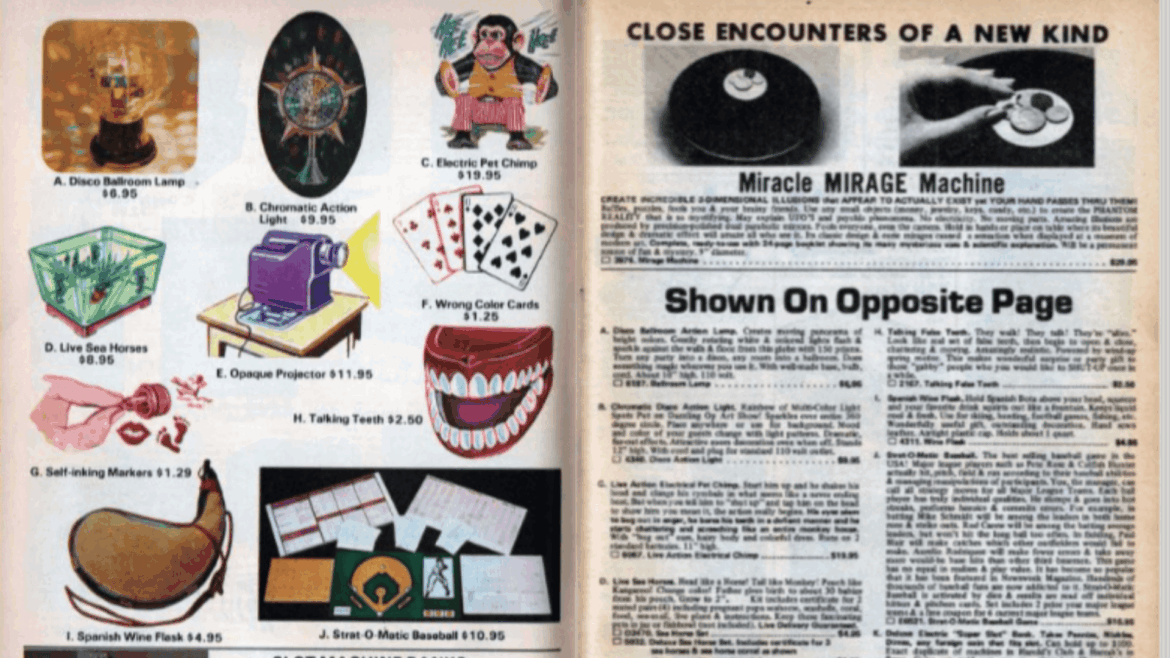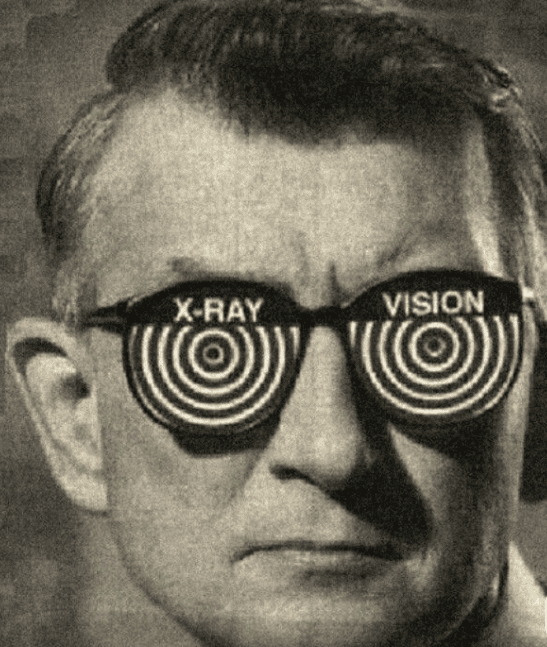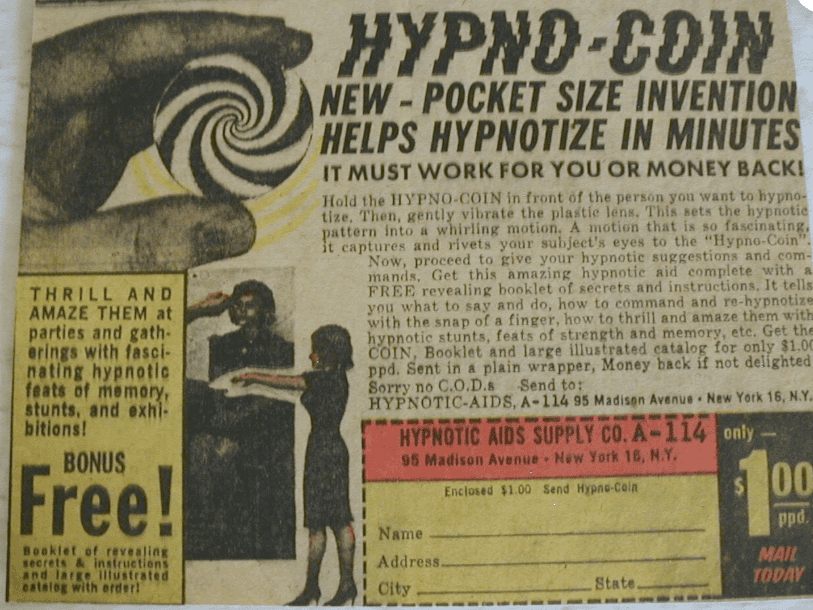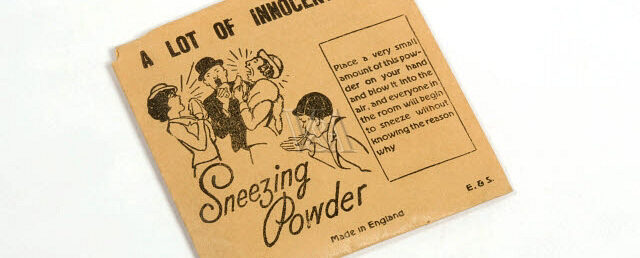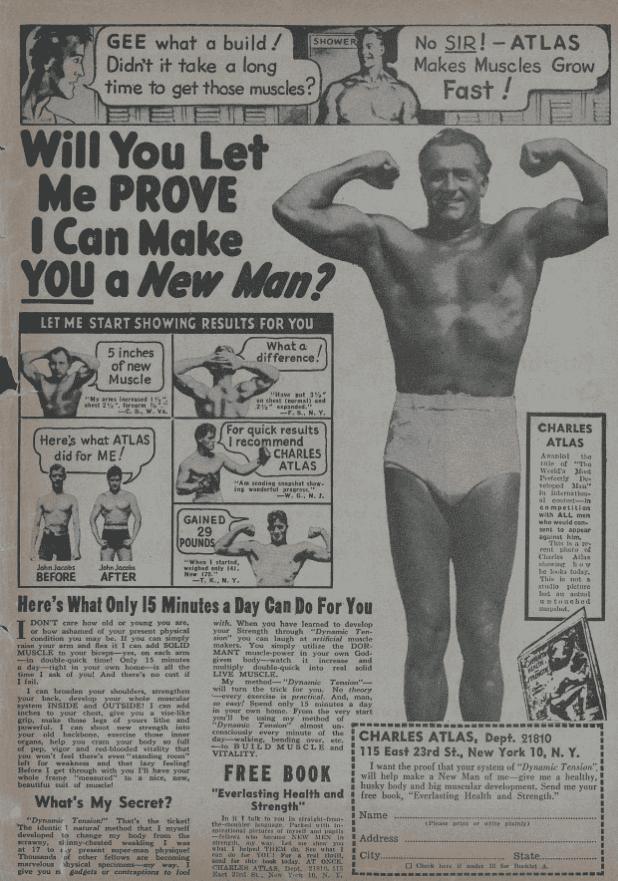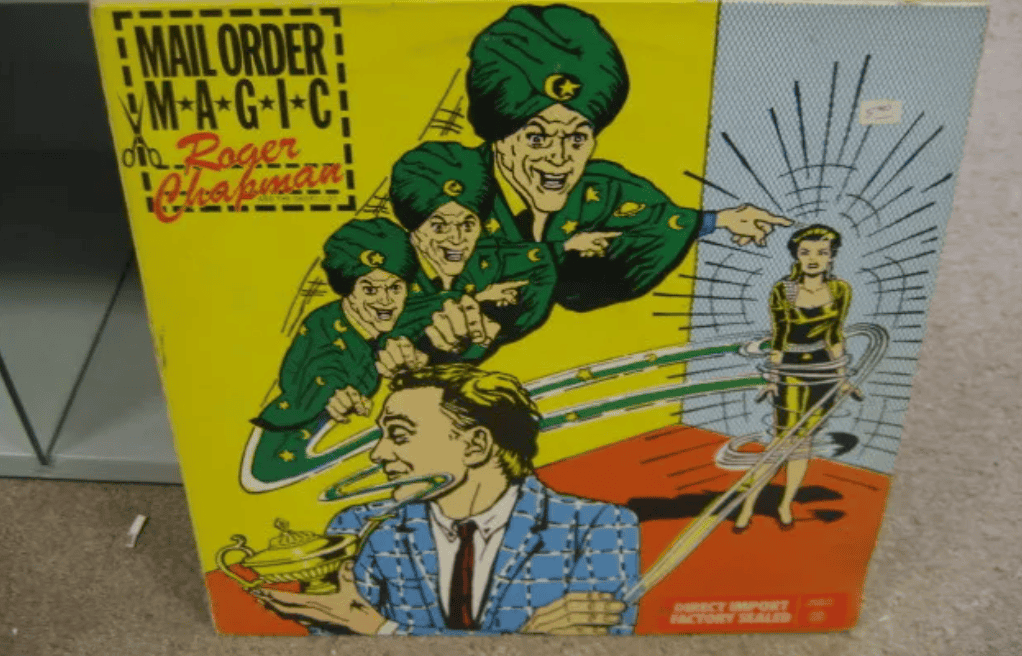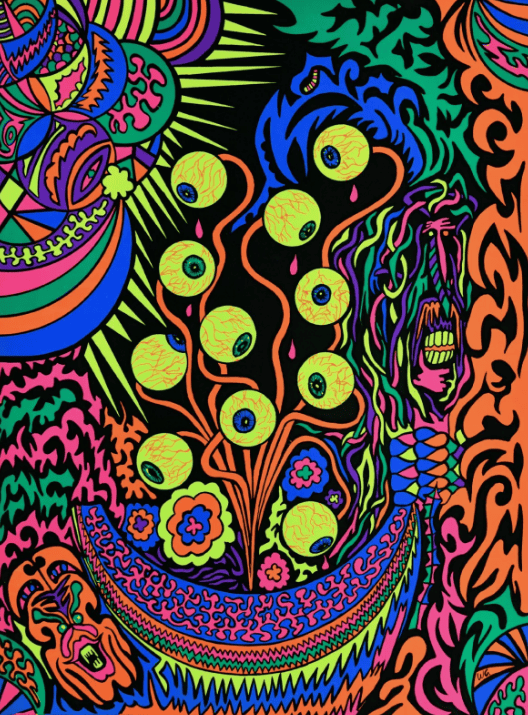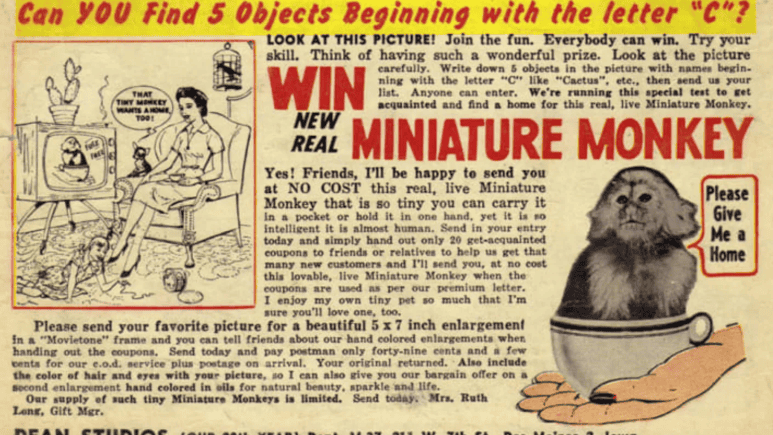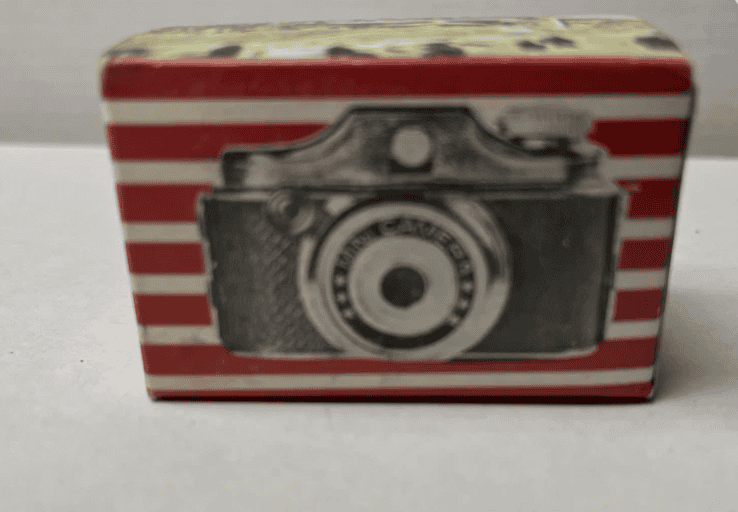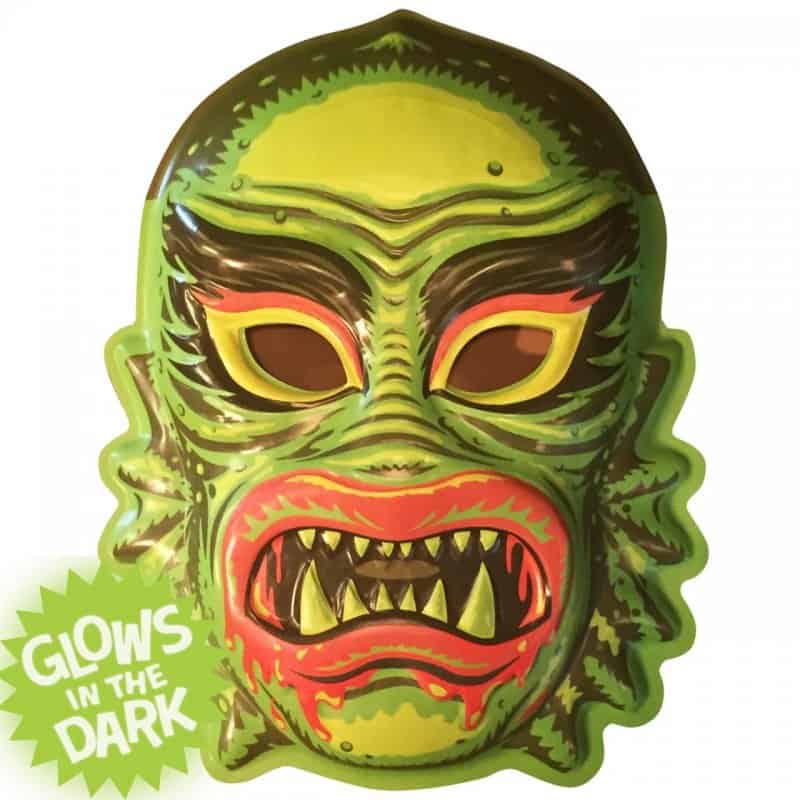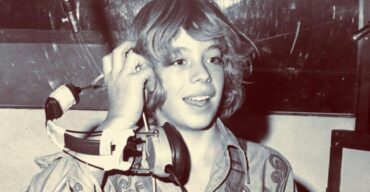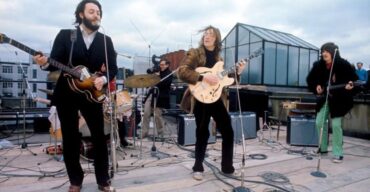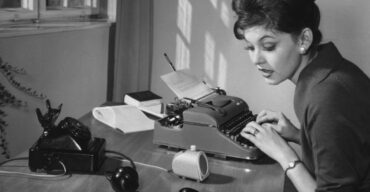Before online shopping, there were mail-order magazines that promoted gadgets, toys, and even costumes you could order, which were delivered to you quickly.
These magazines rose to power in the ’70s and ’80s, and almost every child remembers having at least one toy from one of these magazines. Some were cool, some were a scam, but the joy of receiving one at your front porch was truly magical.
Here are several ‘crazy’ items you were able to order from these magazines back in the ’70s and ’80s.
1. X-Ray Glasses: The Ultimate Playground Fantasy
There was one ad that every youngster remembers: X-ray glasses. They said you could see through walls, clothes, or even skin to see bones.
The brave cartoon pictures had skeletal hands, kids with big eyes, and powers that couldn’t be real. In reality, you really got a weak set of cardboard glasses with plastic lenses that made things look blurry and double.
Even though they didn’t work, kids still tried them on everyone they knew. For a long time, X-ray glasses were the most famous example of mail-order promises that were too good to be true.
Parents rolled their eyes, youngsters fantasized, and comic book publishers laughed all the way to the bank.
2. Sea Monkeys: Tiny Pets With Big Promises
The ad for Sea Monkeys was real bait and a sure way to get kids to buy them. The picture featured a joyful family of humanoid creatures with crowns on their heads living in a palace under the sea.
The writing said that for just a few dollars, you could get “instant life” and a whole kingdom of pets. A package of freeze-dried brine shrimp came, and you’d put them in water, wait, and then strain to see the little dots moving about.
They weren’t the royal family you were promised, but the thrill of witnessing something “come alive” out of a packet made up for it. For a lot of students, this was their first science experiment and their first lesson in how ads can be misleading.
3. Psychic Gadgets and Hypnosis Tricks
The 1970s and 1980s were the best times for interest in the supernatural. Magazines cashed in with ads for hypno-coins, ESP cards, telepathy amplifiers, and crystal necklaces.
These gadgets promised to help kids access latent brain powers and control their minds. In truth, most of them were composed of cheap plastic and only spun in your hand.
But because pop culture was fascinated with mind control and “unlocking the other 90% of your brain,” these ads led to hours of roleplay. A lot of kids sought to “hypnotize” their siblings or practice their psychic look in the mirror.
The instruments didn’t work, but they made bedrooms all throughout America seem more mysterious.
4. Sneezing Powder, Itching Powder, and Other Pranks
Every kid aspired to be the class clown, and prank kits from magazines made it happen. There were fake vomit, sneezing powder, itching powder, stink bombs, and joy buzzers for sale. A few dollars led to unending trouble.
It was common for people to use ground pepper as sneezing powder, crushed rose hips as itching powder, and sulfur capsules as stink bombs that could clear a whole room.
They made parents angry, drove teachers crazy, and sometimes got kids in trouble, but they made you a hero among your peers. Part of the fun was sneaking prank gear into school.
5. Bodybuilding Courses and Instant Muscles
The well-known Charles Atlas advertising featured the story of the “97-pound weakling” who got stronger and got back at people on the beach. That comic strip was simply everywhere.
You could get muscle courses, hand grips, and spring resistance kits by mail. A lot of kids bought in, hoping to become bodybuilders right away. The advertising gave you a strong idea: if you worked hard enough, you could change who you are.
Most of the equipment was weak, and the courses were unclear. The ads weren’t so much about the gadgets as they were about the dream of change, which is what made them famous for years.
6. Mail-Order Magic Kits
You could order a magician’s beginning kit by mail if you wanted to wow your friends and family. The advertising said you would learn how to pluck cash out of people’s ears, make pencils float, and be “the life of the party.”
Most of the time, the truth was a deck of trick cards, a box that made coins disappear, and a set of instructions. But for a lot of kids, this was the start of their passion for performing.
All of a sudden, basements and garages became “theater stages” where magic exhibitions kept the neighborhood enthralled. The props may not have cost much, but the confidence the kids got from doing tricks was priceless.
7. Spy Gear and Secret Agent Kits
During the Cold War, spies and secret operatives were the most popular heroes. Invisible ink, voice changers, decoders, and mirror glasses were all available in mail-order catalogs.
They all worked, but not as well as they said they would. Kids used them to act like the CIA or KGB, sneaking around in backyards on “missions.” Lemon juice was invisible ink, spy pens leaked, and disguises looked silly.
But having a “spy kit” in your hands made you feel like you were in a James Bond movie. For some kids, this was the first time they had ever played role-playing games or told unbelievable stories.
8. Blacklight Posters and Groovy Decor
Mail-order magazines we loved didn’t only sell electronics and gadgets; they sold whole bedroom looks. The ads for the blacklight posters shouted “psychedelic cool.”
They had glowing unicorns, mushrooms, rock stars, and cosmic landscapes. A basic bedroom became a neon dreamscape with the addition of a blacklight bulb that you could order online.
To finish out the look, teens added lava lamps, beanbag chairs, and incense burners. You could make your room look like a hangout from a famous teen show for less than $10. A lot of parents loathed them, but for children, they were a cheap way to get into the cool crowd.
9. Live Animals Through the Mail
Live animals was one of the oddest and most talked-about categories. You could order lizards, turtles, frogs, or even monkeys for only a few bucks (yes, really).
Ads said they were “fun new pets delivered to your door.” Some kids really did get little turtles in cardboard boxes with holes for air. Some people were heartbroken when their frail animals didn’t make it through shipping.
It’s hard to believe this was legal, but at the time, it was simply another crazy ad at the back of magazines. People still talk about it now as one of the strangest mail-order crazes ever.
10. Miniature Gadgets: Cameras, Radios, and Watches
People in the 1980s were really into technology, and the smallest gadgets looked the most futuristic. Ads said that you could have microfunctional cameras, pocket radios, or spy watches that could record voices.
They sounded great, but the little cameras took grainy pictures, and the radios hardly picked up a signal. But there was something wonderful about having a working gadget that fit in your pocket.
Even though the equipment wasn’t great, they helped kids feel like spies and inventors at the same time.
11. Horror Masks and Monster Kits
Magazines also catered to the monster mania. You could get werewolf kits, rubber vampire masks, or “create your own Frankenstein” packages.
The commercials promised scary masks that looked real, but most of them were hot, stinky, and hard to wear. Still, they let kids dress up as monsters for Halloween or play in the backyard.
These mail-order horrors, along with fake blood capsules and glow-in-the-dark skeleton hands, made for some unforgettable, eerie fun. People who liked horror movies back then often state that these corny kits made them adore scary movies even more, forever.
12. Record Clubs and Music Deals That Weren’t So Great
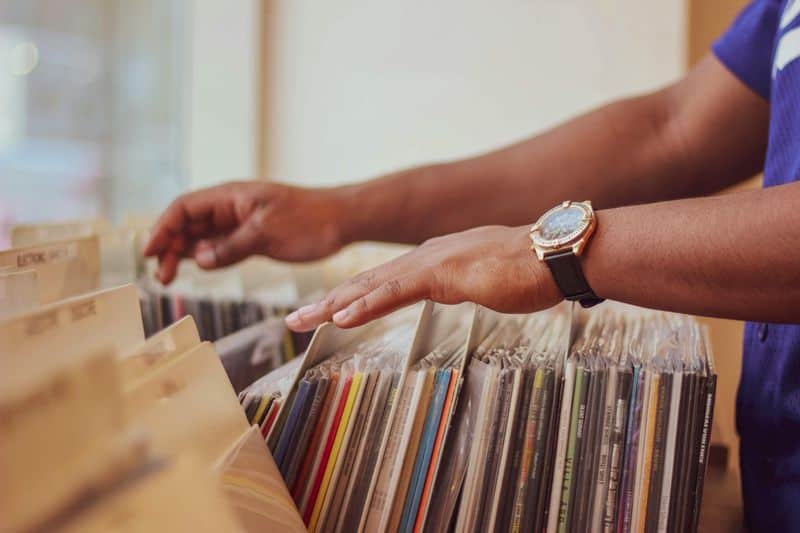
shutterstock
Who could forget the ads that said, “10 records for a penny”? They filled periodicals, music catalogs, and inserts in Sunday newspapers.
The catch was that you had to join a record club and buy albums that cost too much for years after that. A lot of parents wished they hadn’t let their kids join, but for teenagers in the 1970s and 1980s, it was a way to get their first music collection.
When stacks of vinyl albums or cassettes came in the mail, it seemed like Christmas. Even if the deals were hard to get, the record clubs helped kids find bands and styles of music they might not have heard of otherwise.
